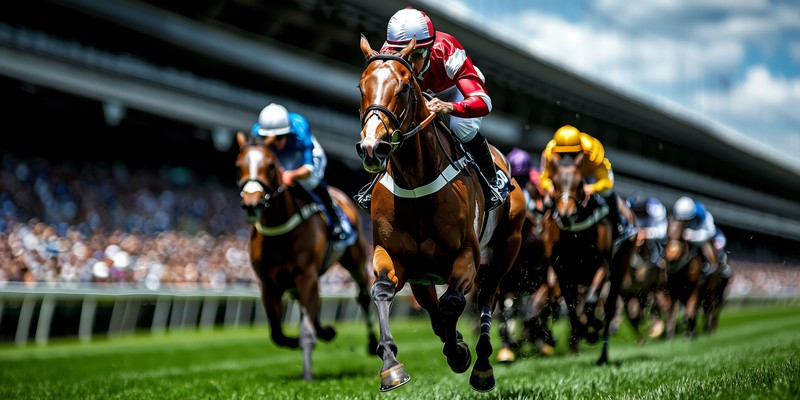It’s that time of year again when the whole nation seems to pause for the race that stops a nation. The Melbourne Cup is Australia’s most iconic horse racing event, held annually on the first Tuesday of November.
Although it’s still a few months away, the buzz is already starting to build, and suddenly everyone is a horse racing expert. You’ll hear conversations everywhere about which horse has the best shot, who’s trained well, or which jockey might come out on top.
If you’re one of those die-hard fans or punters hoping to pick a winner, it helps to look beyond the noise. Here’s some practical advice on what to focus on when assessing the form guide and how to spot a strong contender.
Scope Out Racing Performance
There will likely be 24 horses competing in the upcoming Melbourne Cup 2025. That said, it can feel overwhelming to sort through them all. A good place to start is by looking at their racing history. The truth is, racehorses in good nick heading into the big event usually keep that momentum rolling.
Look for horses that have been running well in their last few starts. That means consistent finishing positions and participation in similar distance and quality races. A horse showing improvements over the last few runs might be ready to perform strongly on the big day.
And here’s a little insider tip: don’t get hung up on wins alone. Sometimes, a horse that finished fourth or fifth in a tough field shows real grit and potential. That can be better than a one-off win against softer competition.
Monitor Market Moves and Expert Tips

In the weeks before the race, it’s worth keeping an eye on how the Melbourne Cup odds are shifting. Big moves in the market can hint at inside whispers or growing confidence in a horse. If the odds suddenly shorten, it may be fuelled by upbeat reports from horse trainers, jockeys, or shrewd bettors.
For example, a runner might start at 20/1 in early betting but shorten to 12/1 as money flows in. That kind of shift can mean the market reacts to positive news, such as strong trackwork, ideal barrier draws, or a change in race tactics. While it’s not a guaranteed sign of victory, it’s a clue to consider when deciding where to place your bet.
Consider Track and Distance Experience
This differs from examining their racing performances, which focuses on a horse’s recent form and momentum. Here, the emphasis is on whether a thoroughbred can handle Flemington’s gruelling 3200-metre test.
The Cup distance at Flemington is no walk in the park. The track has its own quirks, and not every horse can adapt. Some have the stamina but can’t produce that tactical burst down the famous long straight. Meanwhile, others may have the speed but run out of steam before the finish line.
And if a horse is stepping up to 3200 metres for the first time? That’s when endurance gets seriously tested. It’s a factor many regular punters overlook when caught up in the buzz of flashy recent wins.
Check Horse’s Age and Career Stage

You might not give a horse’s age much thought, but it can affect how they perform on the track. If you check out past winners, most are between four and six years old. That age range often hits the perfect balance where experience and fitness come together.
Younger horses, for example, are still developing the endurance needed for long-distance races. They’re in the phase of learning important race tactics, like when to hold back and when to make their move. As for older horses, they bring valuable experience. However, they might also be dealing with some physical wear and tear.
Career stage matters, too. Thoroughbreds with a steady build-up and well-managed campaigns usually peak right when it counts. Be cautious with horses making big jumps in class or distance late in their careers; those can be riskier bets.
Include these criteria in your betting system to help you spot which horses are most likely to shine on race day.
Review Weight Carried and Handicapping
The Melbourne Cup is a handicap race, which means each horse carries a specific amount of weight to level the playing field. The idea is to give every participant a fair chance by assigning heavier weights to the stronger contenders and lighter weights to those less favoured.
It’s a good idea to compare the weight assigned to the horse with its past performances under similar loads. Some horses can handle heavier loads well, which shows real strength and resilience. Others may struggle to maintain pace when burdened.
Knowing how this factor affects each horse can help you fine-tune your selections in the form guide.
Evaluate Jockey and Trainer Records
Did you catch who won the 2024 Melbourne Cup? It was Knight’s Choice, an 80-1 outsider that stunned everyone with a thrilling photo-finish victory. And it wasn’t just the horse’s grit that got it over the line. The people behind the triumph played a huge role.
Irish jockey Robbie Dolan delivered a perfectly timed ride, while trainers John Symons and Sheila Laxon plotted the campaign with precision. That’s why it pays to look beyond the horse and study the team.
A jockey with Cup experience knows how to judge the pace and save energy for the final push. Likewise, trainers who’ve prepared a racehorse understand exactly how to get a horse peaking on race day. Sometimes, these connections are the quiet edge that turns an outsider into a champion.
Takeaway
No one’s pretending that cracking the Melbourne Cup code is easy. There are many factors to take into account, and even the experts don’t always get it right. But that’s part of what makes the race so exciting.
Just focus on the key points, and you’ll give yourself a better chance of picking a winner. In the end, it’s the thrill and enjoyment of the race that really count.

